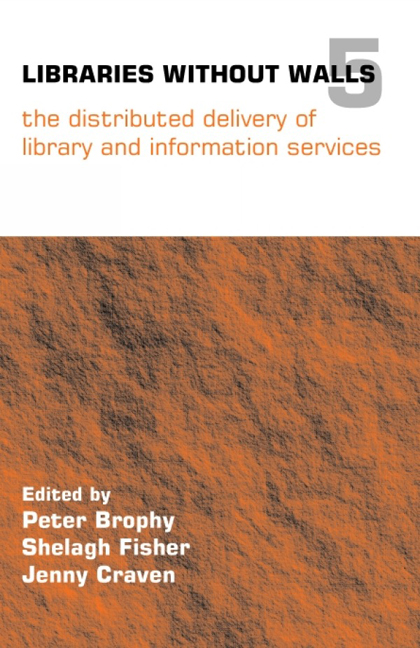Book contents
- Frontmatter
- Contents
- Contributors
- 1 Introduction
- 2 Keynote paper: beyond the mainstream of library services
- THEME 1 THE INTEGRATION OF LIBRARY SERVICES AND VIRTUAL LEARNING ENVIRONMENTS
- THEME 2 THE RELATIONSHIP BETWEEN USER NEEDS, INFORMATION SKILLS AND INFORMATION LITERACIES
- 8 Embedding information skills in the subject-based curriculum
- 9 Ways to engage widening participation students
- 10 Information literacy and learning
- 11 Information literacy – who needs it?
- THEME 3 USABILITY AND ACCESSIBILITY OF DIGITAL LIBRARY SERVICES
- THEME 4 DESIGNING THE INFORMATION ENVIRONMENT: NATIONAL AND INSTITUTIONAL PERSPECTIVES
- THEME 5 THE CREATION OF DIGITAL RESOURCES BY USER COMMUNITIES
- Index
- Miscellaneous Endmatter
- Miscellaneous Endmatter
- misc-endmatter
- Miscellaneous Endmatter
9 - Ways to engage widening participation students
from THEME 2 - THE RELATIONSHIP BETWEEN USER NEEDS, INFORMATION SKILLS AND INFORMATION LITERACIES
Published online by Cambridge University Press: 08 June 2018
- Frontmatter
- Contents
- Contributors
- 1 Introduction
- 2 Keynote paper: beyond the mainstream of library services
- THEME 1 THE INTEGRATION OF LIBRARY SERVICES AND VIRTUAL LEARNING ENVIRONMENTS
- THEME 2 THE RELATIONSHIP BETWEEN USER NEEDS, INFORMATION SKILLS AND INFORMATION LITERACIES
- 8 Embedding information skills in the subject-based curriculum
- 9 Ways to engage widening participation students
- 10 Information literacy and learning
- 11 Information literacy – who needs it?
- THEME 3 USABILITY AND ACCESSIBILITY OF DIGITAL LIBRARY SERVICES
- THEME 4 DESIGNING THE INFORMATION ENVIRONMENT: NATIONAL AND INSTITUTIONAL PERSPECTIVES
- THEME 5 THE CREATION OF DIGITAL RESOURCES BY USER COMMUNITIES
- Index
- Miscellaneous Endmatter
- Miscellaneous Endmatter
- misc-endmatter
- Miscellaneous Endmatter
Summary
Introduction
Widening participation (WP) students are so-called ‘non-traditional’ students from diverse backgrounds who are being encouraged to consider further and higher education. This paper seeks to show that by identifying the learning issues of two different groups of WP students it is possible to find better ways of responding to their needs. Without this understanding we are relying on ‘what the teacher does’ rather than ‘what the student does’ within the learning environment and thus failing to engage the student fully (Biggs, 1999).
In the absence of engagement, information skills work cannot be embedded or integrated, and is thus perceived to be unconnected with study, work or professional practice. It is seen as a means to an end only – encouraging a surface learning approach (Marton and Saljo, 1984). It can also be counter-productive as students who are not engaged can display negative behaviour, be disruptive and spoil the group dynamic. At a surface level there can be little real engagement for the student, no matter how well sessions are planned or how good the content.
The previous and current learning experiences of students affect their perceptions and expectations and can be associated with the three barriers to learning as identified by Cross (1981) and cited by Merrill (2000). Within new situations these perceptions and barriers can have a significant influence on learning approaches and styles (Prosser and Trigwell, 1999). WP students from FE (further education) or a professional background are likely to have more varied learning experiences than traditional students. To understand this relationship and determine how students perceive their situation is a further step towards developing appropriate learning and teaching contexts for successful engagement and deeper learning.
- Type
- Chapter
- Information
- Libraries Without Walls 5The Distributed Delivery of Library and Information Services, pp. 87 - 96Publisher: FacetPrint publication year: 2004



